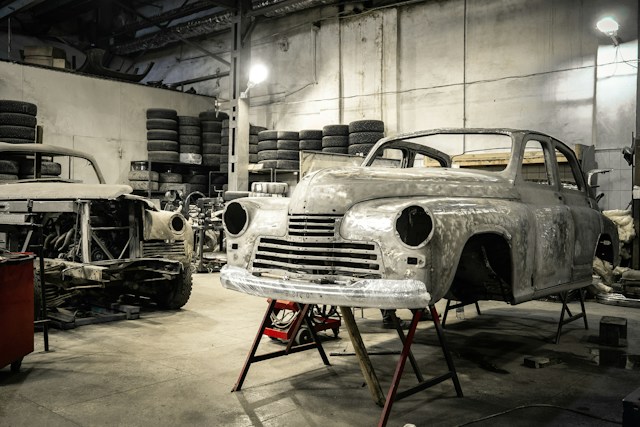Frame Damage 101: Understanding the Basics and Repair Processes
 Frame damage to a vehicle, often a result of a collision, can be one of the most complex issues to address in auto body repair. Understanding the basics of frame damage is crucial for vehicle owners to make informed decisions regarding repairs. This article delves into the nature of frame damage, its implications, and the repair processes involved in restoring vehicle integrity and safety.
Frame damage to a vehicle, often a result of a collision, can be one of the most complex issues to address in auto body repair. Understanding the basics of frame damage is crucial for vehicle owners to make informed decisions regarding repairs. This article delves into the nature of frame damage, its implications, and the repair processes involved in restoring vehicle integrity and safety.
What Constitutes Frame Damage?
The Vehicle’s Foundation
The frame of a vehicle is its structural foundation, designed to support the weight of the car, secure the engine and other components, and provide overall stability and safety. Damage to this critical component can affect the car’s performance, safety, and alignment.
Causes and Types
Frame damage typically results from significant impacts, such as in collisions. It can range from minor alignment issues to severe bends or breaks in the frame structure. Understanding the extent of the damage is essential for determining the appropriate repair strategy.
Implications of Frame Damage
Safety Concerns
The primary concern with frame damage is the potential compromise to vehicle safety. A damaged frame can lead to improper airbag deployment, decreased structural integrity in future collisions, and overall instability in vehicle handling.
Impact on Vehicle Value
Even after repairs, frame damage can significantly reduce a vehicle’s resale value. Disclosure of such damage is typically required, making it a critical consideration for owners and potential buyers.
The Repair Process
Assessment and Diagnosis
The first step in addressing frame damage is a thorough assessment by professionals. Modern auto body shops use advanced technology, such as computerized measuring systems, to accurately diagnose the extent of the damage.
Straightening and Realignment
For vehicles deemed repairable, the frame is straightened using specialized machinery designed to apply precise forces to the frame, returning it to its original specifications. This process requires skilled technicians to ensure accuracy and safety.
Welding and Reconstruction
Severe cases of frame damage may require cutting out damaged sections and welding in new parts. This process must be performed with great care to maintain the structural integrity of the frame and ensure that it meets safety standards.
Final Inspection and Testing
After repairs, the vehicle undergoes a final inspection to ensure that the frame’s alignment meets factory specifications. This may include a test drive to confirm that handling and performance are not adversely affected.
Considerations for Vehicle Owners
Repair vs. Replacement
In some cases, the cost of repairing frame damage may exceed the vehicle’s value, leading owners to consider replacement. Consulting with a trusted auto body professional can help in making this decision.
Insurance Implications
Insurance coverage for frame damage varies by policy. Vehicle owners should consult their insurance provider to understand coverage limits and the impact of frame repairs on future premiums.
Conclusion
Frame damage is a serious concern that requires professional attention to ensure vehicle safety and performance are restored. Understanding the basics of frame damage and the repair process can help vehicle owners navigate the complexities of repair and make informed decisions. With the right expertise and equipment, many vehicles with frame damage can be safely returned to the road, preserving their functionality and value.
